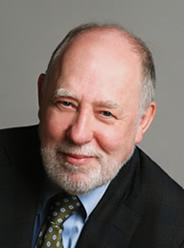Events
Excitation Energy Flow in Photosynthesis
April 25, 2013 at 3pm/36-428
Graham Fleming
Department of Chemistry University of California, Berkeley

Abstract:
The process of light harvesting in photosynthetic plants, algae and bacteria can involve the motion of excitation energy moving through hundreds, and in extreme cases, hundreds of thousands of optically active chromophores, typically chlorophylls and bacteriochlorophylls. Yet a static picture of the light harvesting system is far from a true picture. Light harvesting in plants and algae is highly regulated on a seconds-to-minutes timescale to avoid, for example, damage from excess solar illumination. At low light levels light harvesting transfers excitation energy to the chemically active reaction center with ~97% efficiency, at high light up to 80% of the absorbed photons are harmlessly degraded to heat before reaching the reaction center. These twin requirements mean that a system’s model spans at least 14 orders of magnitude in time.
In this talk I will discuss light harvesting over this range of time and length-scales from the single molecular complex to the photosystem II supercomplex with about 600 chlorophyll molecules.
Bio:
Graham Fleming earned his BS degree from the University of Bristol in 1971, and his Ph.D. in Chemistry from the University of London in 1974. Following a post-doctoral fellowship at the University of Melbourne, Australia, he joined the faculty of the University of Chicago in 1979. There, he was the Arthur Holly Compton Distinguished Service Professor for ten years, starting in 1987. He also served three years as Chair of the Chemistry Department where he led the creation of University of Chicago’s Institute for Biophysical Dynamics. Fleming is currently the Vice Chancellor for Research at the University of California since 2009 and Professor of Chemistry at UC Berkeley, since 1997. Through high level positions at UC Berkeley and Lawrence Berkeley National Laboratory (where he was Deputy Laboratory Director from 2004 – 2006), he has been involved in the formation and operation of multiple major initiatives at Berkeley and LBNL. These include the $500M BP funded Energy Biosciences Institute, The California Institute for Quantitative Bioscience and the Simons Institute for the Theory of Computing. He has authored or co-authored more than 444 publications, and is widely considered to be one of the world’s foremost authorities on ultrafast processes. His ultimate goal is to develop artificial photosynthesis that would provide humanity with clean, efficient and sustainable energy.”






